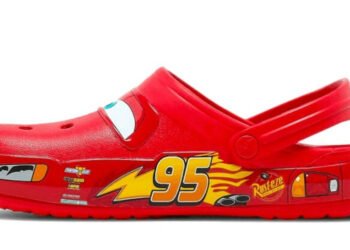Luscious, healthy hair isn’t just about genetics. It’s about understanding your unique hair type, giving it the nourishment it craves, and adopting a gentle yet effective hair care routine. Whether you dream of bouncy curls, sleek straight locks, or vibrant color, healthy hair is the foundation for achieving any style.
This guide equips you with expert tips and tricks to transform your hair care routine and unlock the full potential of your mane.
Understanding Your Hair Type
The first step to healthy hair is knowing what you’re working with. Here’s a breakdown of the four main hair types:
- Fine Hair: Lacks volume and can appear greasy easily.
- Thick Hair: Coarse strands with a lot of volume.
- Wavy Hair: Falls somewhere between straight and curly, with S-shaped waves.
- Curly Hair: Ranges from loose waves to tight coils.
Understanding your hair type helps you choose the right products and styling techniques. For example, fine hair needs lightweight products to avoid weighing it down, while thick hair might benefit from richer formulas for added moisture.
Nourishing Your Hair from Within
Healthy hair starts from the inside out. What you eat plays a crucial role in hair health. Here’s what to focus on:
- Protein: The building block of hair. Include lean protein sources like chicken, fish, lentils, and nuts in your diet.
- Omega-3 Fatty Acids: Found in fatty fish, flaxseed, and walnuts, they nourish the scalp and promote hair growth.
- Iron: Deficiency can lead to hair loss. Include iron-rich foods like spinach, beans, and red meat in your diet.
- Vitamins: A deficiency in vitamins A, C, D, E, and B vitamins can impact hair health. Consider a multivitamin like those from www.vitaminsrevive.com to fill any nutritional gaps.
Choosing the Right Hair Care Products
With countless shampoos, conditioners, and styling products on the market, choosing the right ones can be overwhelming. Look for products like the products of My Haircare & Beauty formulated for your hair type. Here’s a quick guide:
- Fine Hair: Use gentle, volumizing shampoos and lightweight conditioners. Avoid heavy styling products.
- Thick Hair: Opt for moisturizing shampoos and conditioners. You can use styling products, but choose lightweight formulas.
- Wavy Hair: Use hydrating shampoos and conditioners to combat frizz. Styling creams or mousses can help define waves.
- Curly Hair: Focus on sulfate-free shampoos and deep conditioners to retain moisture. Styling gels or creams can help control frizz and define curls.
Effective Hair Washing Techniques
Washing your hair removes dirt and product buildup, but it’s important to do so gently. Here are some key points:
- Frequency: Wash your hair based on your hair type and scalp condition. Fine hair might need daily washing, while thick hair might only need it every 2-3 days.
- Water Temperature: Avoid hot water, which can strip your hair of natural oils. Use lukewarm water for washing and cool water for rinsing to seal the hair cuticle.
- Shampooing: Focus shampoo on your scalp, where dirt and oil accumulate. Massage gently and rinse thoroughly.
- Conditioning: Apply conditioner to the mid-lengths and ends of your hair. Leave it on for a few minutes before rinsing.
Protecting Your Hair from Heat Damage
Heat styling tools like blow dryers, straighteners, and curling irons can damage hair. Here’s how to minimize the impact:
- Heat Protectant: Always use a heat protectant spray before applying heat to your hair.
- Low Heat Settings: Use the lowest heat setting that gets the job done.
- Air Drying: Whenever possible, air dry your hair to avoid heat damage altogether.
- Heat Styling Tools: Invest in high-quality heat styling tools that distribute heat evenly.
Combatting Common Hair Problems
Dryness, frizz, and dandruff are common hair concerns. Here’s how to tackle them:
- Dryness: Deep condition regularly and use a leave-in conditioner for added moisture.
- Frizz: Use frizz-control products and avoid harsh shampoos that strip your hair of natural oils. Diffuse your hair instead of air drying for more defined curls.
- Dandruff: Use an anti-dandruff shampoo formulated with ingredients like zinc pyrithione or salicylic acid.
Seasonal Hair Care Tips
Hair care needs can vary depending on the season:
- Summer: Sun exposure can dry hair. Use a leave-in conditioner with SPF and wear a hat when outdoors.
- Winter: Cold air can lead to dryness and static. Use a deep conditioner regularly and minimize heat styling.
Conclusion
Healthy hair requires patience, consistency, and the right approach. By understanding your hair type, nourishing it from within, choosing the right products, using effective techniques, protecting it from heat damage, and addressing common issues, you can achieve luscious locks that are the envy of all. Remember to also adjust your hair care routine based on the season for optimal results. With these expert tips and tricks, you’re well on your way to achieving everyday hair health! So, keep experimenting with different products and techniques until you find what works best for your unique mane. Happy hair days ahead!












